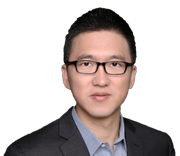One of the forefronts in developing better treatment for cancer is at the interface between synthetic chemistry, molecular biology, and immunology. A researcher at Rice University is combining his skills in all of these areas to modify biological molecules, develop better anti-cancer antibodies, and engineer more efficient immune therapies for cancer.
Chemical biologist Han Xiao was recruited to the Rice University Department of Chemistry from Stanford University, where he was a Life Sciences Research Foundation fellow in cancer immunotherapy. He was recruited in 2017 with the help of a First-Time Tenure-Track Award from CPRIT.
Read More
One of the forefronts in developing better treatment for cancer is at the interface between synthetic chemistry, molecular biology, and immunology. A researcher at Rice University is combining his skills in all of these areas to modify biological molecules, develop better anti-cancer antibodies, and engineer more efficient immune therapies for cancer.
Chemical biologist Han Xiao was recruited to the Rice University Department of Chemistry from Stanford University, where he was a Life Sciences Research Foundation fellow in cancer immunotherapy. He was recruited in 2017 with the help of a First-Time Tenure-Track Award from CPRIT.
Xiao uses the tools of synthetic chemistry to create biomolecules with added features. For example, he can use chemical strategies to manipulate antibody molecules to augment functions that are useful in a biological context, such as enhancing the efficacy of an antibody for tumor killing or increasing the capacity of immune cells.
One biomolecule he has synthesized contains a cancer-specific antibody coupled with a chemical imaging reagent. These antibody conjugates help doctors see the boundaries of a tumor non-invasively and also help surgeons operate using fluorescence-image–guided surgery to remove the tumor. Xiao has filed a patent for the reaction to create this biomolecule and Rice is currently looking for a commercial partner interested in developing it for use in clinical settings.
Xiao is also trying to link antibodies together to create antibodies that have dual specificities, one of which would target cancer, and the other of which would link to a patient’s own immune cells. “In effect this would be immune therapy,” he says. “We can drag them together and stimulate the immune cell to kill the cancer cell.”
Another concept Xiao is investigating is a chemical solution to a genetic engineering problem. Chimeric antigen receptor (CAR) T-cell therapy is emerging as a revolutionary anticancer therapy, where through genetic engineering, a patient’s immune cells are endowed with enhanced affinity for cancer cells. But this therapy is limited by long production times, complexity, and high cost. Xiao is trying to see whether these biomolecules could be synthesized via chemical, rather than genetic means. He hopes his approach would overcome CAR’s current limitations, potentially making it more widely available to cancer patients.
Xiao says that his research is fundamentally based on the tools of organic chemistry, and he is developing new chemical reactions to pursue biological problems — but with translational medicine in mind. “We are doing a lot of fundamental chemistry research, but one goal we have is to see how we can use this basic research to improve people’s health,” he says.
In other work, supported by the Welch Foundation, Xiao is developing fluorescent dyes that will help scientists obtain higher-resolution images inside cells using light microscopes.
“CPRIT funding as a junior faculty is really helpful. It helped us to set up the lab and recruit people, but that’s only one part,” Xiao says. In addition, CPRIT scholars have really formed a community that has benefited not only his own laboratory but cancer research throughout Texas. “I see more and more outstanding scientists come to Texas because of CPRIT.”
Xiao received his undergraduate degree in chemistry from the University of Science and Technology of China, and his Ph.D. in chemical biology from the Scripps Research Institute in San Diego. He began his postdoctoral fellowship at Stanford in 2015.
Read Less

